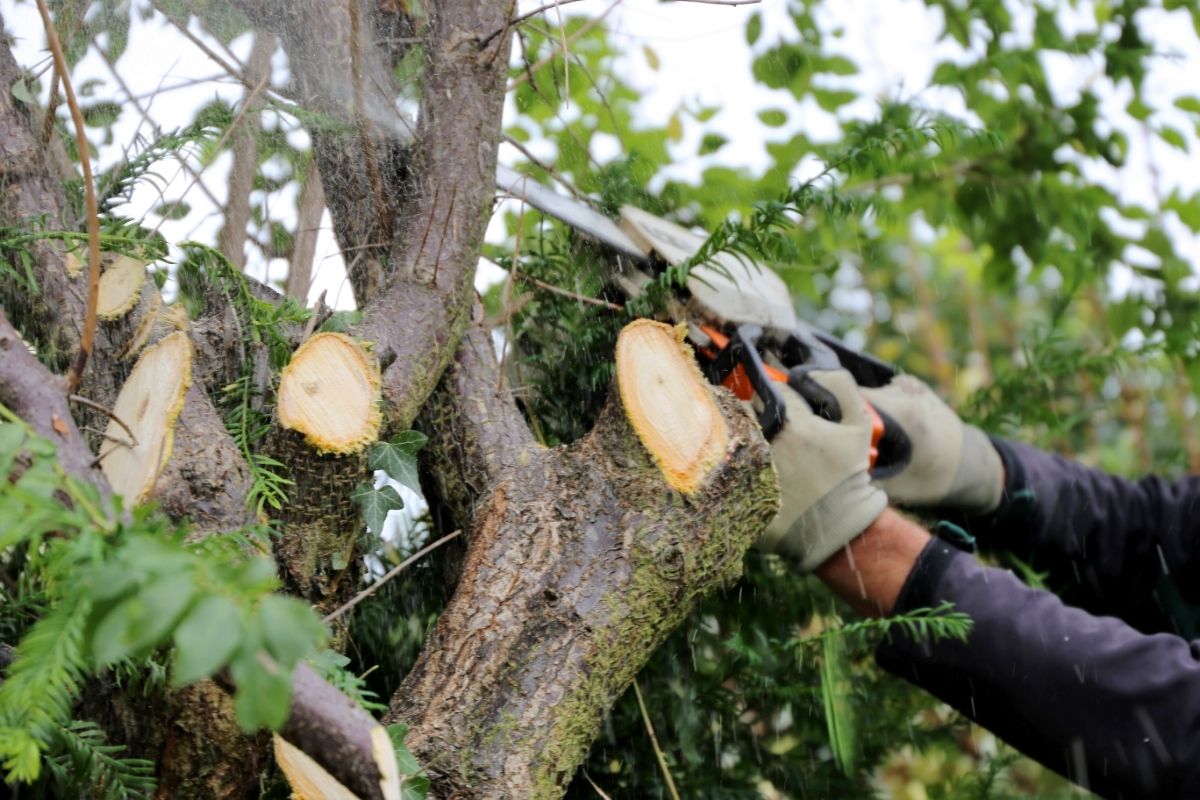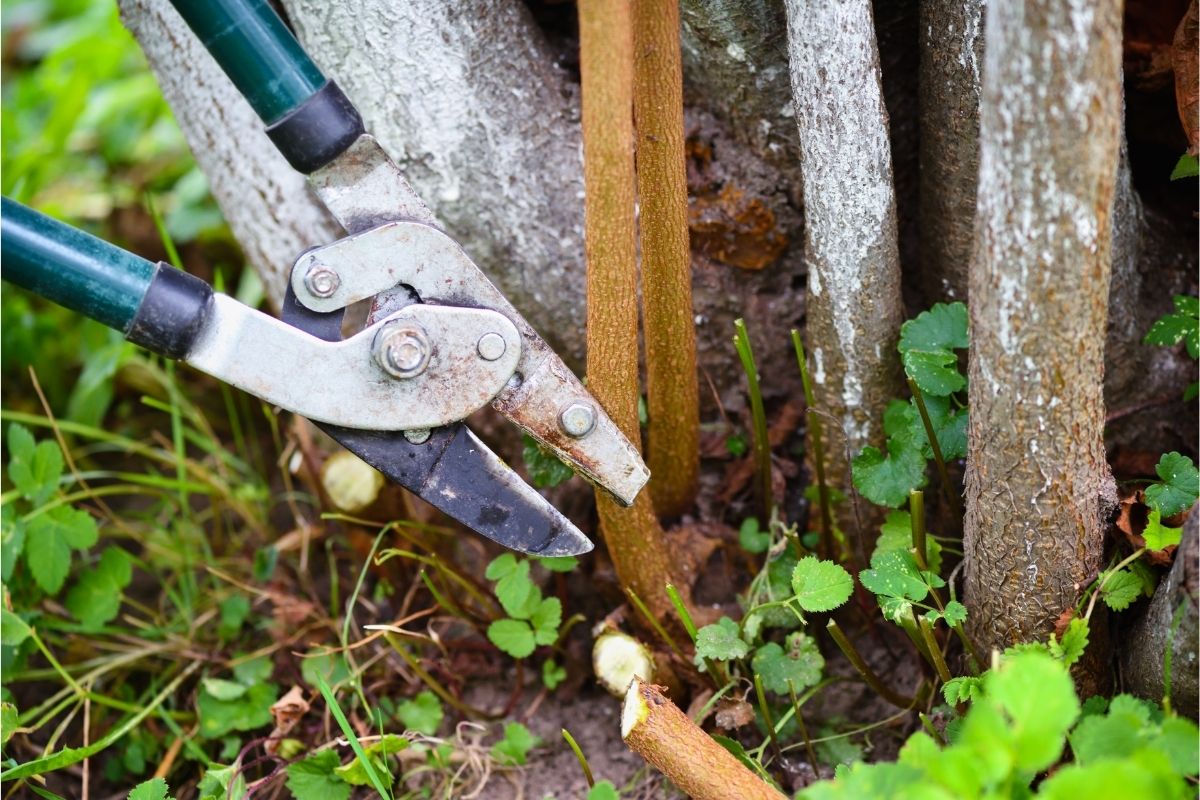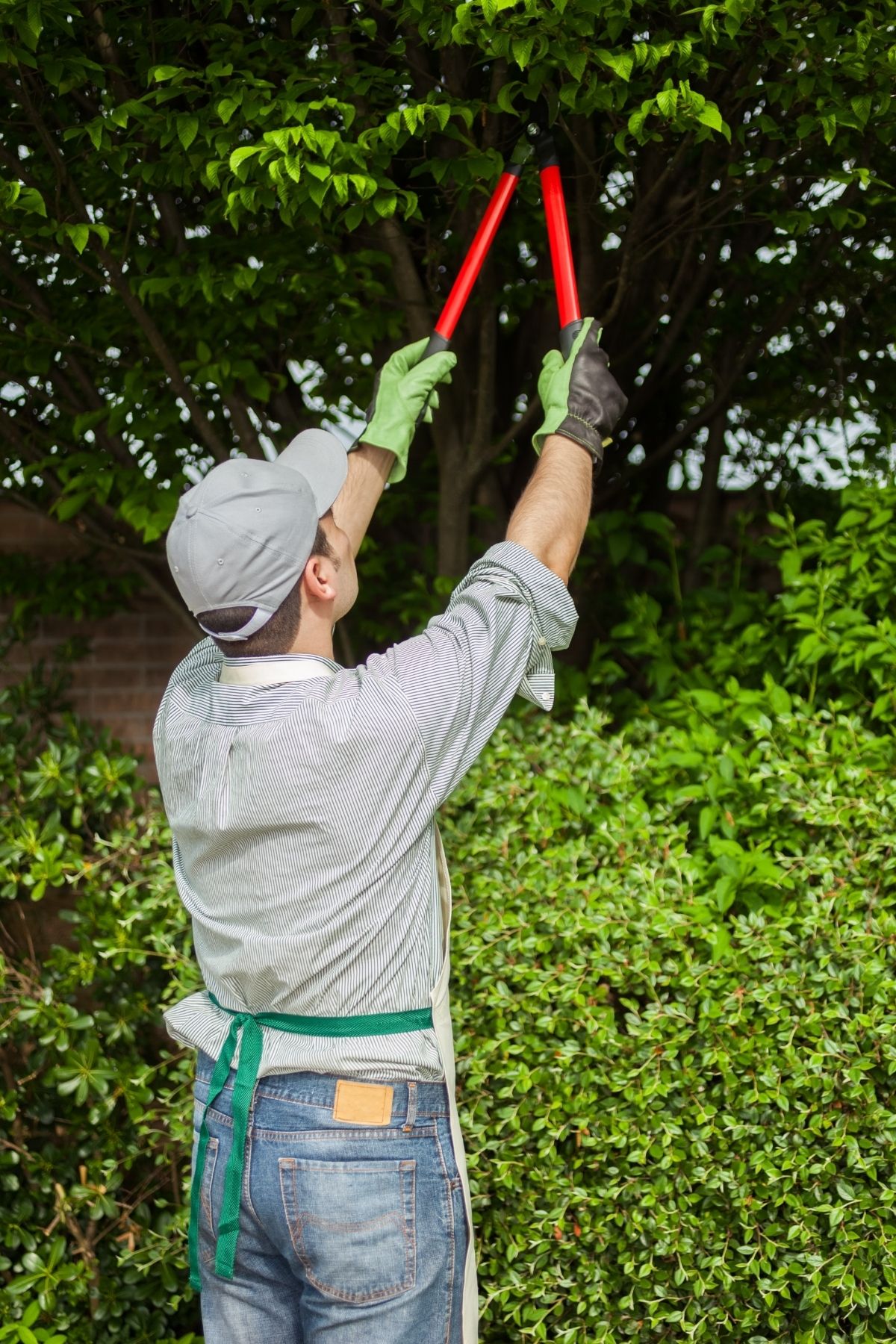What Does Brush Cleanup Mean?
Brush cleanup is usually as simple as trimming the bushes and mowing the grass. In this case, you need to know the best way to clear brush and vines. But sometimes, things get a little out of hand, and you’re left deciding how to clear overgrown land. This article will learn everything you need to know about removing brushes and small trees from your backyard.
This includes the best hand tools and brush clearing power tools to a different method that will allow you to double-up on your tasks.

What is the Best Way to Clear Brush and Vines?
Brush clearing doesn’t have to be a challenging task. You will need to assemble all the brush clearing tools before beginning the process. Below are steps you can use in clearing bushes:
Examine Your Land
You wouldn’t build a house without blueprints and a strategy, so clearing brush from your yard should be no different.
While you don’t need a map of your backyard, you should walk through it and figure out the best way to clear the brush and undergrowth. Mark any trees you want to remove and make a note of any areas that appear to be particularly dense in overgrowth. It’s also a good idea to make a note of places in your yard that may be difficult to work on, such as swampy or rocky terrain.
Make a Brush Disposal Plan
Your weekly trash collection may not be able to handle the yard debris, depending on the scope of your project. Alternatively, you may not want to wait until your area’s next brush collection day to clear the brush.
Consider alternatives such as composting or renting a yard waste dumpster. A dumpster rental is an easy way to get rid of your overgrown yard on your schedule, from dirt and limbs to shrubs and brush.
Gather Your tools
Gather your tools for clearing brush. By now, you already know whether you intend to remove the brush by hand or with power tools. However, having the right tools will make the job easier.
Remove the Trees
You marked the trees you wanted to cut down in the preparation section. This is your last chance to change your mind, as tree removal is the first task you must complete.
How to Clear Brush and Small Trees
- Make a mark about a foot above the ground on the trunk.
- Using an ax or chainsaw, cut a 45-degree angle until you’re about a third of the way through the trunk. Make sure you’re cutting into the side of the tree you want it to fall toward. On the tree’s opposite side, cut a 45-degree wedge slightly higher than the cut on the opposite side. This cut should be approximately halfway through the trunk.
- Push the tree from the side where you made your second cut. If the tree does not fall, use your bow saw to continue cutting until it does.
- Repeat steps 1 to 4 for the number of trees you want to remove.
How to Get Rid of a Stump
After you’ve cut down the trees, you’ll need to remove the stumps to clear your land of brush completely. There are numerous approaches to take, but they depend on size and quantity. Here are a couple of methods for getting rid of them:
- Dig them out with your shovel. This method works best on smaller stumps with shallow root systems. First, dig to expose the roots, then cut the stump free with an ax or pruning shears. Pull the stump out of the ground next.
- To remove the stumps, use a stump grinder. This method is effective for small stumps with a stubborn root system and medium to large stumps with shallow roots. You can rent grinders at home improvement stores.
- Ensure you fill the hole with topsoil or dirt to have a flat surface. You can do this either with a stump grinder or topsoil.
Remove Shrubs
After felling the trees, the next step is to remove any mid-to-large-sized shrubs. Depending on their size, some may be removed by hand, while others will necessitate a shovel to dig out the roots. Pruning back some of the smaller branches or sections of a shrub may be beneficial to make digging it out a little easier.
How to Remove Shrubbery
Shrubs can be removed by simply pulling them out or trimming them with a tree pruner.
Remove the stump and roots with a shovel.
Underbrush Clearing
Once you have cleared away all the more oversized items, it’s time to get back into the thick of things. Tall grass, weeds, small shrubbery, and vines continue to obstruct the path, so get out your weed trimmer, scythe, machete, and tree pruner and get to work.
How to Clear Brush and Vines
- Toss thicker vines and brambles to the side with a tree pruner.
- Remove any more enormous weeds by pulling them out at the root.
Remove the Remainder
The final step is straightforward. Using your string trimmer or scythe, remove the remaining vegetation. You should cut as close to the ground as possible. If the overgrowth is particularly dense, cut it down halfway on the first pass and trim it to the ground on the second pass.
If the brush you need to trim is particularly thin, you can complete this step with a lawnmower. However, you may need to clean out your mower’s deck more frequently.
It’s Time to Clean
You’re nearly there! It’s time to finish clearing the brush with your rake. There is no correct or incorrect way to rake up the trimmed brush. Just keep in mind that you will need to dispose of the brush. Make piles with your disposal method in mind, whether a compost pile, your weekly trash collection, or a yard waste dumpster.

Our Recommendations for Brush Clearing Tools
Companies design brush-clearing equipment to remove the following:
- Brush tangles
- Vines
- Weeds that have overgrown
- Small trees/saplings
- Cattails and other tall plants
- Bushes
A bulldozer can clear your land quickly, but most homeowners lack the budget, training, or need for such drastic measures. You can also go the traditional (and most taxing) route and remove overgrowth with a chainsaw, ax, or pruners.
For an average person, using tools designed to quickly remove trees and brush, such as the ones listed below, can make the job of clearing your yard less stressful:
String Trimmer With Blade Attachments
Let’s start simply by discussing a tool that most homeowners already own: a string trimmer. When you use a heavy-duty commercial-grade line with your string trimmer, you can easily cut down thick weeds, vines, tough grass, and fibrous plants like cattails.
Replace your string trimmer head with solid metal blades, which come in various styles to fit most models for thicker brushes and saplings.
The only disadvantage is that it takes strength to hold, control, and run the trimmer for an extended period. Larger jobs with thicker shrubs or trees will necessitate more powerful equipment.
Brush Mower
When you have a large area to clear, a brush mower is an excellent piece of equipment for cutting down overgrown weeds and young trees. Most brush mowers are walk-behind models with a self-propel feature to keep you from having to struggle to push the mower through the thick growth.
You can also attach a pull-behind unit, a brush, or a bush hog to an ATV or tractor to quickly clear large swaths of land.
Brush mowers can easily cut through three-inch-thick stems or trunks while destroying vines, weeds, and other brushes. Expect a rough cut through the vegetation, with three to four inches of growth left above ground.
A powerful brush mower effectively keeps rough landscape areas under control while maintaining a more natural appearance.
Stump Grinder
Did you chainsaw down trees on your property but still have vexing tree stumps obstructing your ability to use your land as you see fit? While you could spend months chopping away at them with an ax or using chemicals to eat away the wood, there is a more efficient way to remove stumps.
A one-person stump grinder can quickly remove those stumps. These small units are potent and can rip through trunks and roots, allowing you to reclaim and flatten your yard. Wheel the grinder over to the stump and turn it on. The blades quickly grind up the woody material. Reuse the wood chips as mulch in planters, walkway material, or compost material.
Keep your body and clothing away from the spinning blades, as this is the most common cause of stump grinder accidents.
Consider hiring a professional stump grinding service if you have a large number of large stumps to remove. Otherwise, you can remove the most average-sized with a grinder, which you can either buy or rent.
Brush Grubber
If you need to remove small trees or large bushes, a brush grubber will do the job that a brush mower cannot. Brush grubbers use metal jaws to grasp a bush, small tree, or stump. Then, attach a chain to the other end and pull the plant out by the roots with an ATV, tractor, or truck.
You should not be concerned once you remove the root because the tree or bush will regrow. This tool also eliminates the need for stump grinding. The more force you apply to the tool, the more firmly the jaws grip the trunk, so there’s no danger of it slipping off and injuring you.
The Benefits of Clearing an Overgrown Yard
There are numerous advantages to brush clearing and why someone wants or requires this service. Let’s take a closer look at the benefits:
Stay Safe From Wildfires
When droughts, high temperatures, and many dead or dying plants all combine in one area, you have the perfect recipe for a wildfire. Dead leaves, wood, and other dry plant life allow the fire to burn longer and devastate an area more quickly. However, you will help yourself and your neighbors stay safe in the event of a fire if you clear out all of the excess debris in your yard.
A tidy yard leaves little room for a fire to start and spread.
Maintenance
You will be able to maintain your yard more easily after clearing a large amount of debris from it. For example, you may have previously been unable to access parts of your yard due to overgrown bushes, trees, or other plant life that made them inaccessible for maintenance.
Now that you have removed the overgrowth, you can easily keep future growth at bay while maintaining a clean and manicured yard.
Land Use Increases
You can do whatever you want with more open land. It not only enhances the appearance of your property, but it also provides you with additional space to use in ways such as:
- Adding a room to your house.
- Including a pool.
- Laying more grass.
- Including a shed.
When you have extra space, the possibilities are limitless. When you add more to your property, you increase its value, which can help you in the future if you decide to sell or rent it out.
Maintain a Clean and Tidy Environment
Another advantage of brush clearing is having a lovely-looking yard. A well-kept landscape is something for which homeowners and buyers are willing to pay a premium. It demonstrates that you care about your home and the land around it. Not every home buyer desires a fixer-upper.
By caring for dead or dying plants and trees, you increase the value of your property and home to people who want things to be “move-in” ready. Even if you aren’t planning on putting your house on the market anytime soon, a well-kept yard will enhance the appearance of your home.

Conclusion
Now that you know how to clear your overgrown brush in the best way possible, you can think about how you can use that space to improve your property. In addition, utilizing the land clearing tools and steps outlined in this guide should help you complete the task more quickly, allowing you to enjoy your new space sooner.
Clearing land can add more enjoyment to your life. For example, you could create a pasture for your animals, install a pool, start a garden, or open up views to a breathtaking vista. I hope this guide assists you in clearing your land safely and efficiently to make your property more appealing and valuable!
